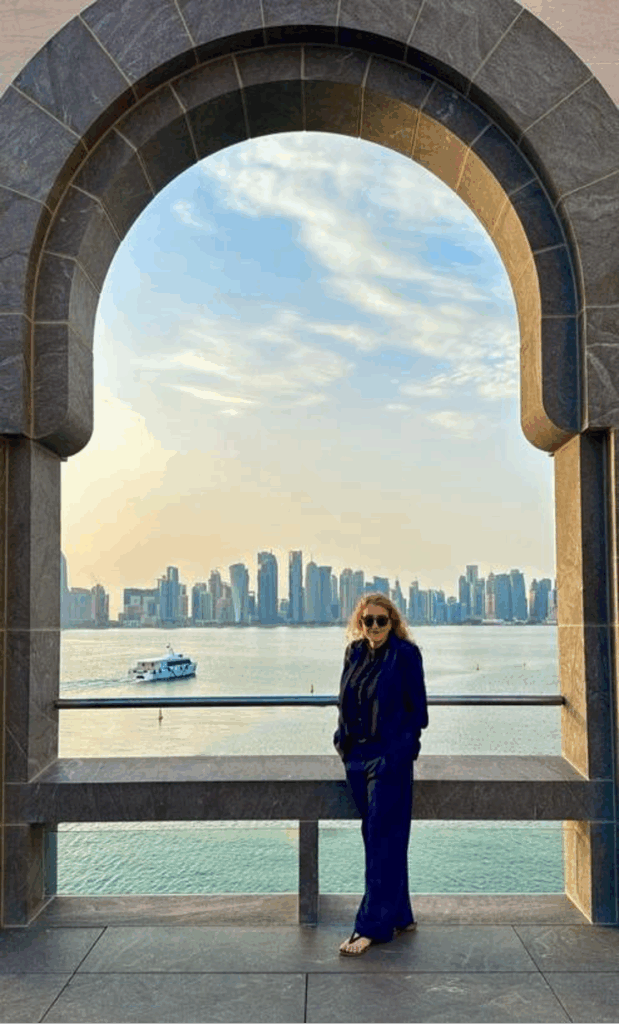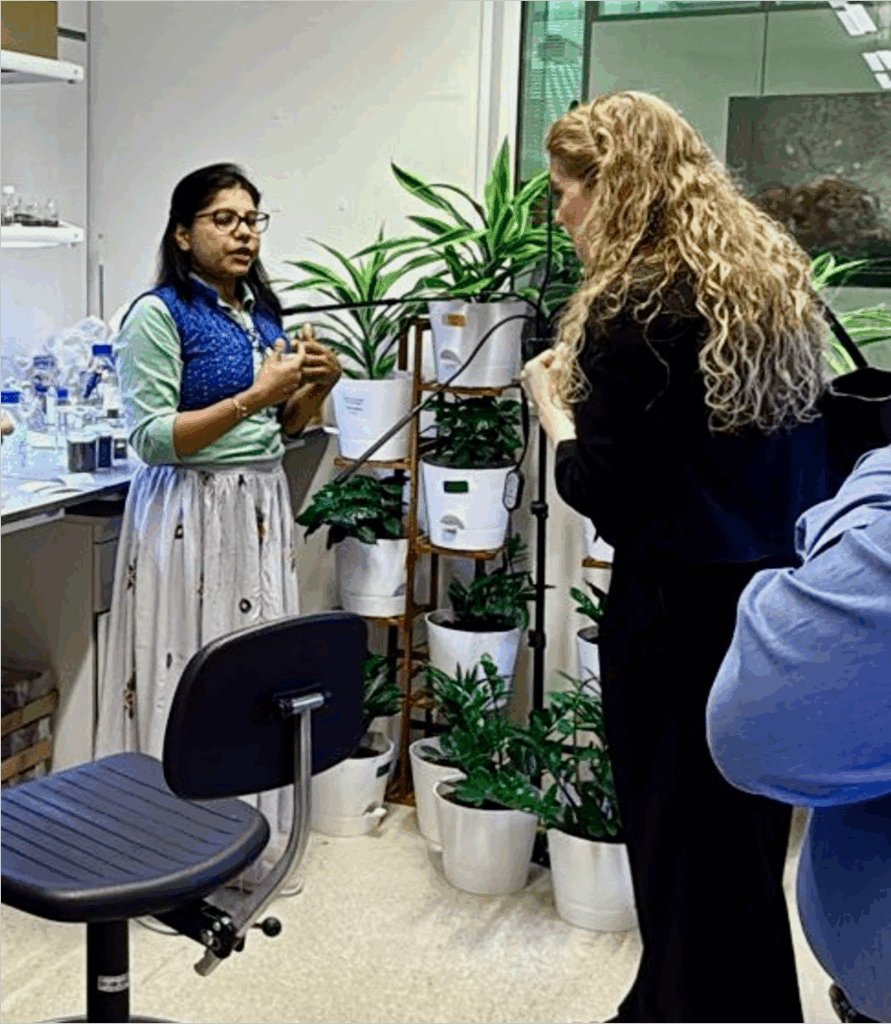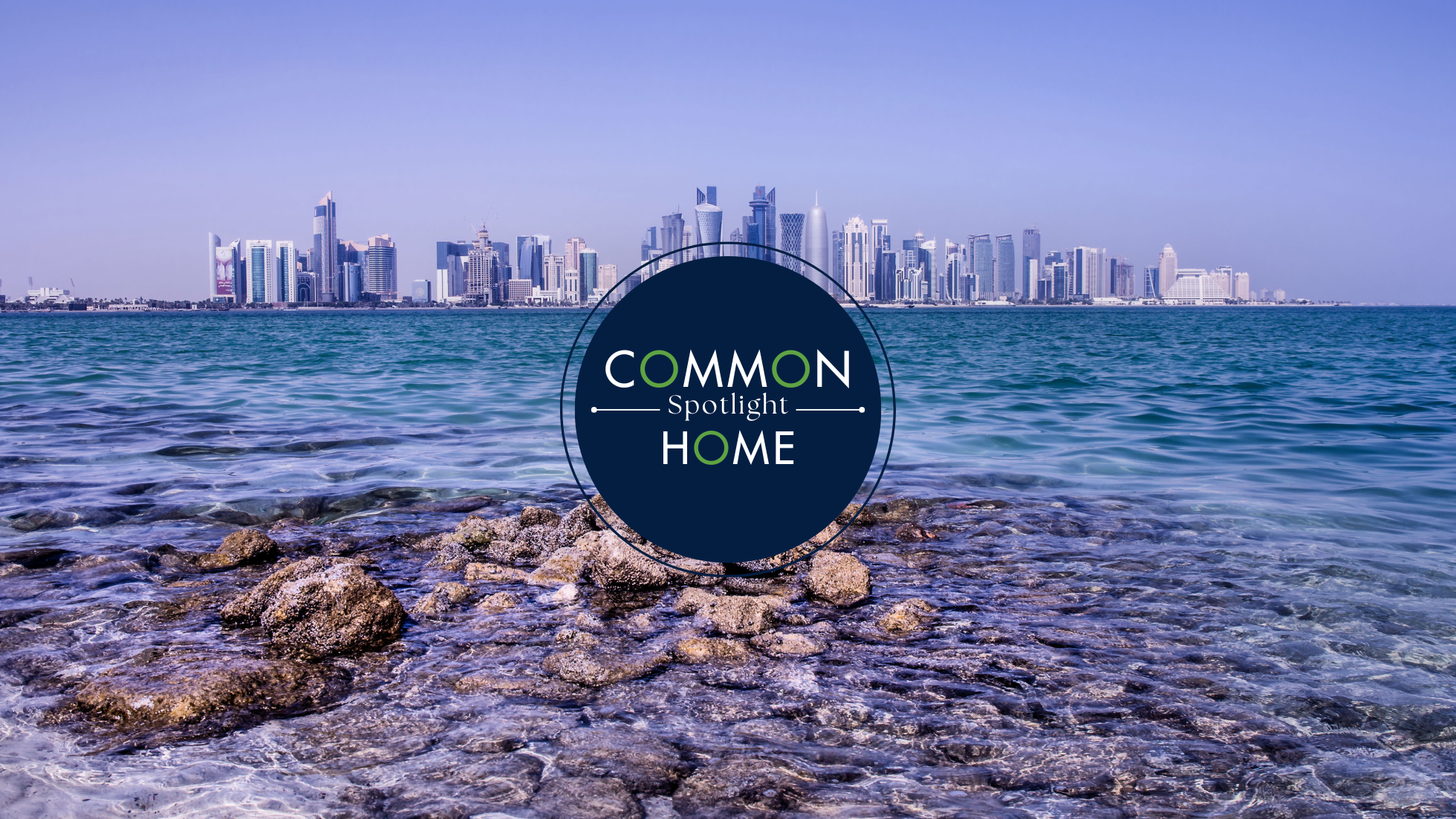Sustainable Coastal Cities and Biodiversity in Hot and Arid Environments
A Field Visit to Doha and the Earthna Summit
A Common Home Spotlight by ECo Faculty Network member Dr. Marisa O. Ensor
May 22, 2025
Under the theme “Building our Legacy: Sustainability, Innovation, and Traditional Knowledge,” the second edition of the Earthna Summit (April 22-23, 2025) highlighted Qatar’s renewed commitment to advancing sustainability in hot and arid environments by drawing on its rich cultural heritage, unique ecosystems, and biodiversity. This Summit, which I was fortunate to be invited to attend, served as a platform for exploring how both traditional knowledge and innovative approaches can inform sustainability, shaping a more resilient future. It was convened by the Earthna Center for a Sustainable Future (Earthna) a non-profit policy, research, and advocacy center established by the Qatar Foundation – which includes a partnership with Georgetown University’s Qatar campus – to promote a cooperative approach to environmental, social, and economic sustainability.
As the world marks the International Day for Biodiversity (IDB) one month later (May 22nd) in the current scenario of accelerating global warming, cooperative approaches, like Earthna, to respond to increasing climate aridity, and its effects on both built and natural ecosystems are more important than ever. The theme of the International Day for Biodiversity (IDB) 2025 is “Harmony with Nature and Sustainable Development.” Earthna, together with its partners, is one of the most influential policy and research centers leading the way in the region. In line with IDB’s theme for this year, current Earthna-led programs investigate the nexus between biodiversity, climate and energy, and sustainability through interdisciplinary research in Qatar and other hot and arid countries.

The iconic skyline in Doha, Qatar, seen from the Museum of Islamic Art – A coastal city in a hot and arid region that blends tradition and modernity.
Sustainable Coastal Cities in Hot and Arid Environments
Several coastal cities in the Middle East, particularly those in the Gulf Cooperation Council region (GCC; Saudi Arabia, UAE, Qatar, Bahrain, Kuwait, and Oman), share similar hot and arid climates. These include cities like Doha (Qatar), Dubai and Abu Dhabi (United Arab Emirates), Kuwait City (Kuwait), and Muscat (Oman). Furthermore, extensive replacement of greenery and other natural elements with artificial heat-absorbing features can trigger local overheating, resulting in a well-documented phenomenon known as urban heat island effect (UHI). Urban sprawl and UHI magnify the release of anthropogenic heat, the blockage of urban ventilation, the absorption of solar radiation, and the entrapment of long-wave emissions, which in turn, are primary drivers of UHI intensification.
Located on the coast of Qatar, Doha is not just vulnerable to temperature increases. The country’s topography – a flat peninsula with huge developments on reclaimed land – makes it one of the Arab countries most at risk from sea-level rise. The Arid Cities Network is an Earthna-facilitated collaborative effort to help cities in hot and arid regions respond to the challenges of water scarcity and extreme heat in a warming climate. It was officially launched during the Earthna Summit 2025. Due to the extent of the detrimental impacts that climate change poses to coastal cities in the GCC, several other initiatives are also at work to reverse the threat to built and natural ecosystems along the coastline.

At the Qatar Environment & Energy Research Institute – QEERI, learning both innovative and traditional methods to minimize soil moisture loss in hot and arid environments.
Coastal Biodiversity in Hot and Arid Environment
Recent studies conclude that a sea level rise of 1 meter would flood a significant extent of coastal areas in the region. In Qatar, the rapid urban development and the myriad anthropogenic changes taking place along the coast are threatening its biodiversity, marine ecosystems, natural resources, and marine cultural heritage.
Qatar’s Ministry of Environment and Climate Change, Qatar University’s Environmental Science Center, and Earthna, signed an agreement in 2013 to collaborate on a national program to conserve and restore Qatar’s coastal environments. The coastline of Qatar is home to diverse ecosystems including mangrove forests, intertidal mudflats (sabkha), seagrass beds, and coral reefs. These ecologically interconnected ecosystems contain a substantial proportion of Qatar’s total biodiversity. Earthna is a member of the Global Mangrove Alliance (GMA), which was launched in 2018 at the World Ocean Summit to bring together a wide range of stakeholders working to conserve and restore mangroves. More broadly, the GMA seeks to expand the global mangrove habitat by 20 per cent by 2030. In Qatar, Earthna and its partners have embarked on a significant mangrove research and restoration project. This project, which includes initiatives supported by UNESCO, aims to rehabilitate degraded mangrove ecosystems through scientific inquiry and hands-on conservation efforts to advance our understanding of their ecological significance.
Mangrove forests have been increasingly recognized as critical coastal ecosystems, are havens for biodiversity, and critical for climate action. These coastal forests are comprised of the only shrubs and trees that thrive in salty waters and improve water quality by filtering out nutrients and sediments. Mangroves extract up to five times more carbon than forests on land, incorporating it in their leaves, branches, roots, and the sediments beneath them. Mangroves absorb the impact of waves and act as a buffer zone, absorbing the impact of strong winds and reducing the vulnerability of coastal communities to damage and destruction caused by flood surges and other extreme weather events. They offer nature-based solutions to climate adaptation and coastal protection from soil erosion and rising sea levels.
Mangroves are one of the few woody ecosystems that grow in hot and arid climates. They can survive extreme conditions of low precipitation, high solar radiation, wide temperature fluctuations, and hypersalinity (high salt concentrations). These salt-tolerant mangroves, like those found along Qatar’s coasts (Avicennia Marina), are mostly tide-dominated, with freshwater flows limited to groundwater and sporadic tropical storms. Climate change-induced phenomena pose a threat to the health of mangrove forest ecosystems and to the biodiversity that they support. Coastline development constitutes another threat to mangrove conservation and biodiversity, as mangrove trees are uprooted resulting in a loss of habitat. At the Earthna Summit, participants attended a documentary screening highlighting the biodiversity of mangroves and the threats these ecosystems face. It was followed by a panel discussion on the key actions required to preserve their biological diversity.
A Call to Greater Action
Over one-third of the world’s population lives in regions with hot and arid environments that are at risk of greater aridity under climate change – e.g., the Sahel; northwestern parts of the Indian subcontinent; vast areas of Western Asia; portions of South America. In the Middle East, already one of the hottest regions on earth, temperatures have risen twice as fast as the global average. In hot coastal environments, high humidity combined with UHI exacerbates heat stress, which can lead to a range of serious heat-related conditions. Countries in these regions necessitate tailored, place- and culture-based solutions. A report titled “Traditional Knowledge in Water Resource Management: Lessons Learned from Three Case Studies from Around the World,” presented at the Earthna Summit, discusses traditional knowledge and practices as key resources in adapting to climate change and water insecurity in hot and arid environments.
As we face a future defined by exceeded planetary boundaries, the task of ensuring that both built and natural environments in hot and arid climates are resilient, sustainable and livable for all the species that call them home requires urgent, bold, and collaborative action on multiple fronts. This year’s International Day for Biodiversity’s campaign illustrates that approach. IDB25 seeks to focus the world’s attention on the linkages between the 2030 Agenda and its Sustainable Development Goals (SDGs), and the Goals and Targets of the Kunming-Montreal Global Biodiversity Framework, two universal agendas that must be pursued in tandem in the spirit of the recently adopted Pact for the Future. Far from barren or empty, hot and arid environments contain resilient ecosystems that are home to species (and peoples!) well adapted to extreme conditions. Earthna and its partners are combining traditional knowledge and innovative approaches to develop sustainability frameworks and development plans that are tailored to hot and arid climates and can, by qualified extension, provide a blueprint for similar regions around the world.

